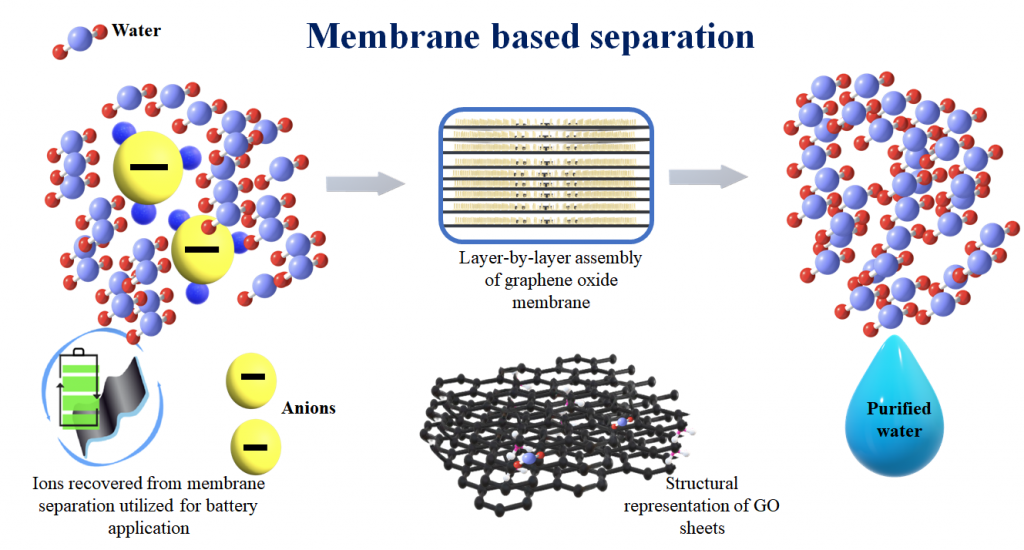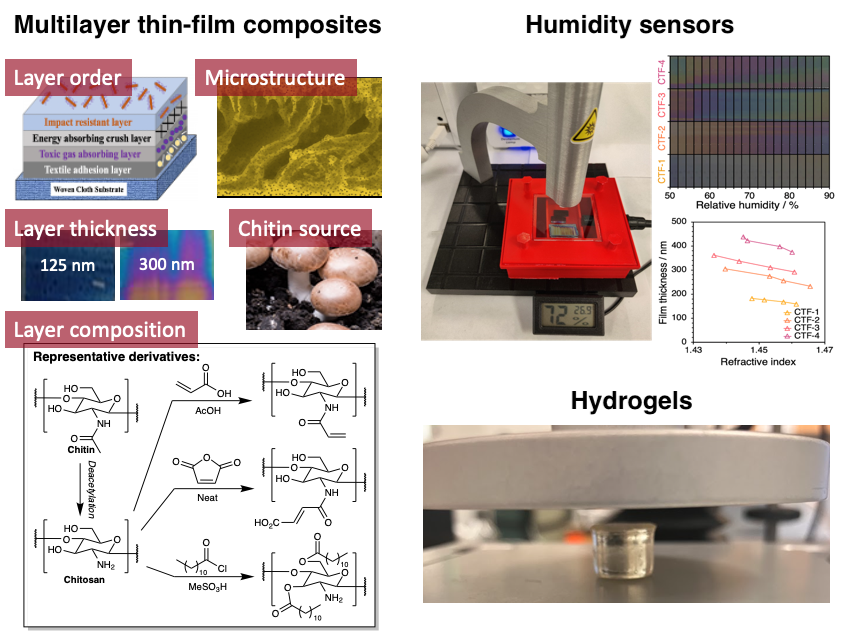Nanomaterials for filtration membranes
Current surface water resources will soon be insufficient to meet the needs of coming generations. One solution is reuse of water through purification. Wastewater is now contaminated with oil and other organic compounds due to the rapid rise in petrochemical, pharmaceutical, and food processing industries. Membranes present an easy and energy-efficient solution for the removal of both particulate and oily matter from wastewater. The self-assembling characteristics of block copolymers (BCPs) provide a promising pathway in developing ultrafiltration membranes with continuous nanoporous channels. Such uniquely defined morphologies can be further tuned by selectively partitioning an active species into the pore-forming domain of BCP. We are developing processes for easy fabrication and modification of such polymeric membranes for oil/water, particulate, and gas separations. We are also developing 2D MXene-based membranes with high percentages of dye and salt rejection.
Lab members working in this area: Kshitij, Saurabh

Chitin-based biomaterials
Chitin is the second-most abundant biopolymer in Nature, where it is expressed in composite structures with impressive mechanical properties such as in the shells of crustaceans. We are interested in developing multilayer thin-film composites using chitin and its derivatives (e.g., chitosan and functionalized variants) as major components. A variety of different layer types are under development (e.g., an impact resistance layer), and each layer is intended to impart its properties to the multilayer composite. One avenue through which such properties are being pursued is chitosan-based hydrogels systems with enhanced strength, Young’s modulus, and impact characteristics. Additionally, we are developing biopolymer-based sensors. Humidity sensors play an essential role in monitoring product quality in the manufacturing and pharmaceutical process industries. Lately, thermoplastic polymers and semiconducting inorganic materials-based sensors are raising environmental concerns owing to non-degradable nature despite their performance. We are leveraging chitosan’s propensity to swell in the presence of moisture for the development of thin-film structural color-based humidity sensors with good mechanical stability.
Lab members working in this area: Justin, Sam, Wafa

